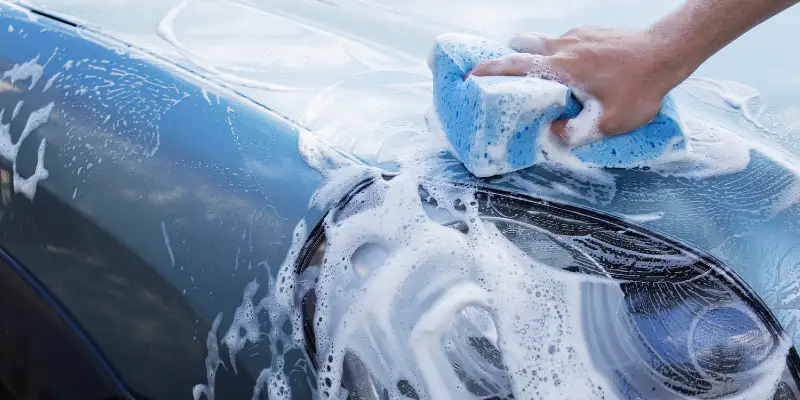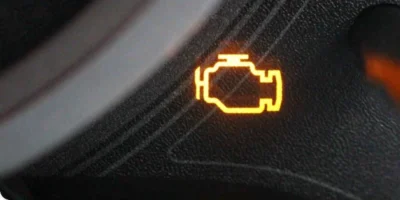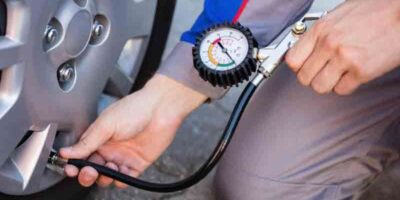This guide outlines how to hand wash a car properly, and what NOT to do.
It’s that time of year again. The sun comes out, and suddenly that white car’s murky brown underbelly is more obvious than ever. It’s time to get the sponge and bucket out. But there must be more to it than a bucket and sponge? How do others get their car looking sparkling from the inside out?
How o clean car seats correctly without damage
How to hand wash a car
We’ve got a fully-fledged guide to how to hand wash a car correctly, so read on for all the details.
What not to do when you hand wash a car
You can damage your car if you use too much force when you hand wash a car. Modern vehicles are designed to absorb impact by crumpling at the first sign of force, which means you need to put the pressure washer away. The pressure washer is good for the gutters, good for the roof and good for the driveway, but it will damage your paintwork, the plastics like your bumper and door moldings and the interiors such as around the engine or under the bonnet.
You can use a pressure washer to get the dirt and grime off the stronger areas of the car, avoiding the more fragile areas, but a pressure washer won’t clean it or tackle the bacteria, which means you need to get the soap and bucket out anyway. In this respect a hand wash is always better for your car, especially if you have an interesting model you want to keep in top shape.
If you’re worried about damage to your car, you can look into suitable car insurance. Comprehensive coverage, in particular, will help you fix damage to your car that wasn’t caused by a road traffic accident or collision, but there are also other policies at different rates that cover liability, collision and medical payments.
The exterior
The first step to hand wash a car is establishing when you should clean it. You might look out at the bright sun on a hot afternoon and decide it’s prime time, but the sun might dry the soap before you have a chance to rinse down your car, leaving streaks. If it’s a nice day, aim for a cooler time of the day, like morning or evening to tackle the wash.
Your first move is to remove the initial dirt and grit with a pressure washer, or much better, a hose. Now you’ll need your bucket of soap. Work your way down from the top so that the dirt doesn’t slide into what you’ve already cleaned and avoid the sun drying your soap and dirt in place by rinsing as you go.
Wipe the car down to avoid a streaky finish or watermarks on the car and once everything is dry, clean in between the cracks in the boot and the doors with a damp cloth. Use another damp cloth or a brush to get into all the nooks of the wheels and alloys.
Once your car is clean, you’re ready to wax or polish. This will make it sparkle in the sunlight so you can see yourself in it. Plus, it will protect the car for longer, so that you don’t have to clean it as often.
The interior
If your car isn’t just for show, you will know just how quickly it can go from presentable, to a nest of discarded wrappers, dog hair, dust, and slime from a kid with an ice cream for a treat. This means it takes a little more forethought than just tossing out that soda can every now and then to keep it clean, although that is the first step. You’d be better off starting with a blank canvas to work with when you hand wash a car.
Remove the mats from the front seats too, to clean them, and hoover underneath. If you really want to take things a step further, you can remove the seats from the car and hoover all over the base. They’re bolted to the floor via the seat slider so you can move the seat as far forward as possible, remove the bolt, then repeat with the back end and pull the seat out.
Go around the car with the hoover, and perhaps the lint brush to get the really stubborn dog hairs that seem to embed themselves in the fabric of the seats. Removing the seats will also make them easier to clean. If you so wish, you can use a wet vac to remove any stains from the fabric.
Once the soft furnishings are done, you can run some polish and a duster over the hard surfaces and consoles of the car. Break out the window cleaner and clean the windscreen.
It’s also a good idea to look at your car’s ventilation, especially if it hasn’t been driven in a while. Turn on the ignition and close the air vents. Turn your fan to the highest speed and open each vent one at a time so that the debris stuck in the vents is dislodged. Wrap a cloth around something thin and sharp like a pencil or screwdriver to get in between the vents.




